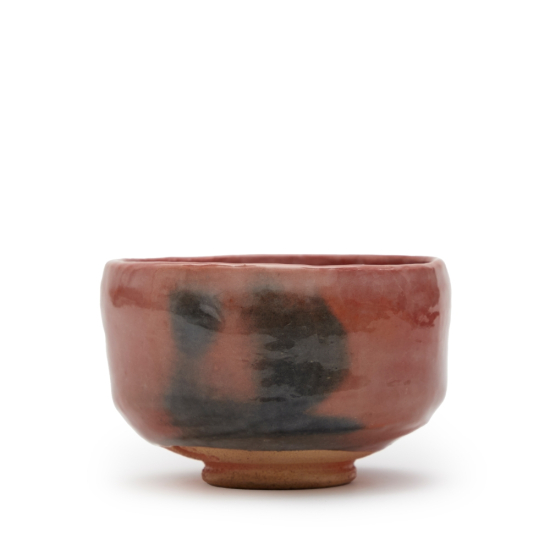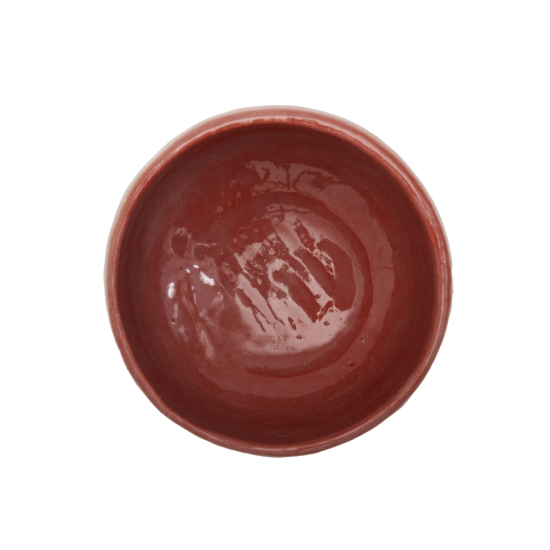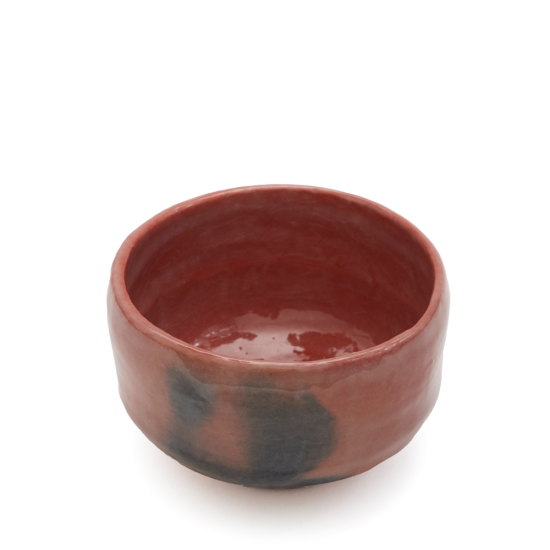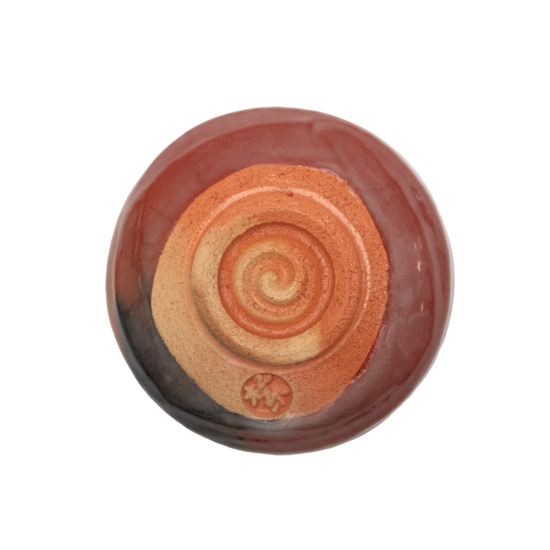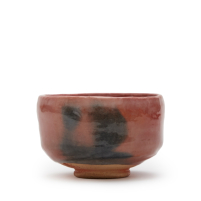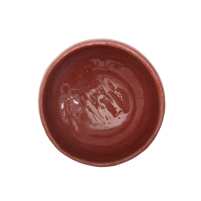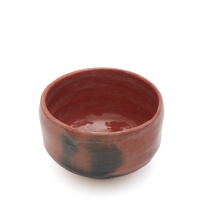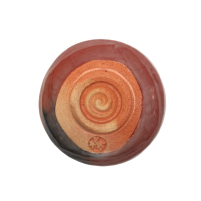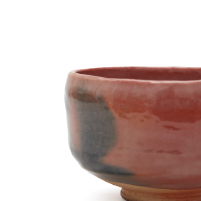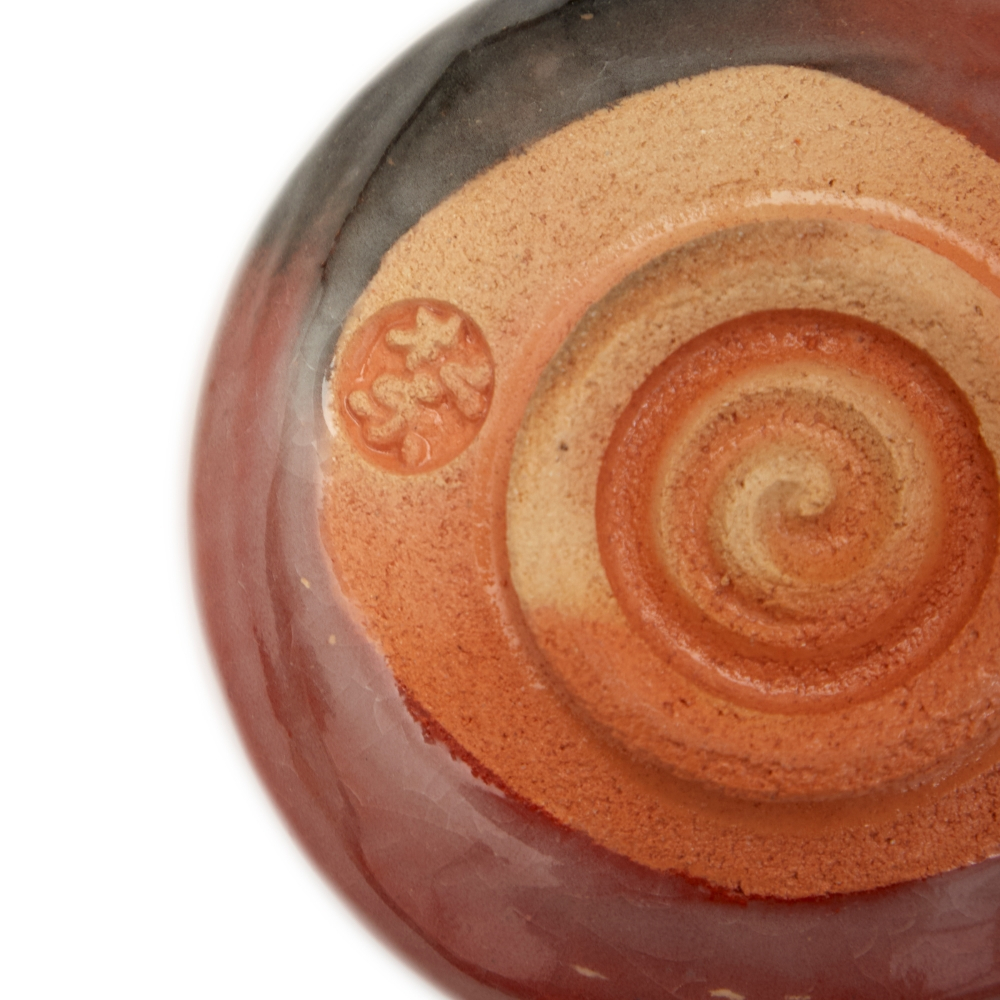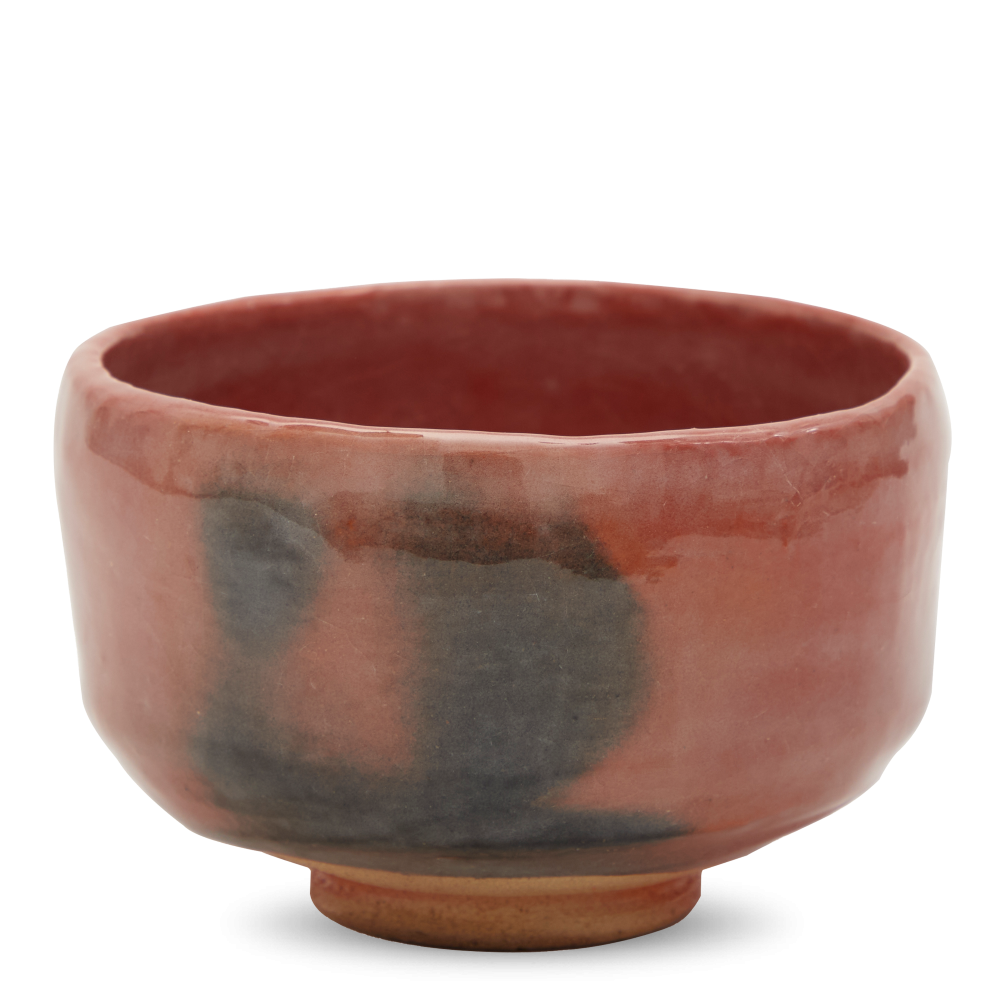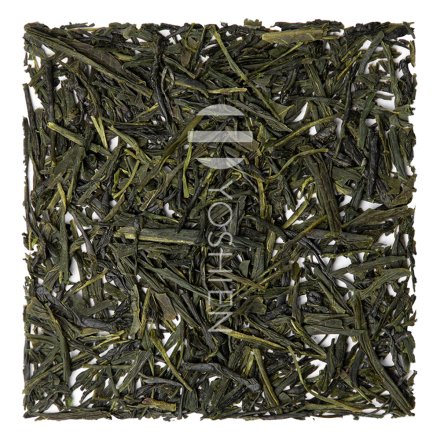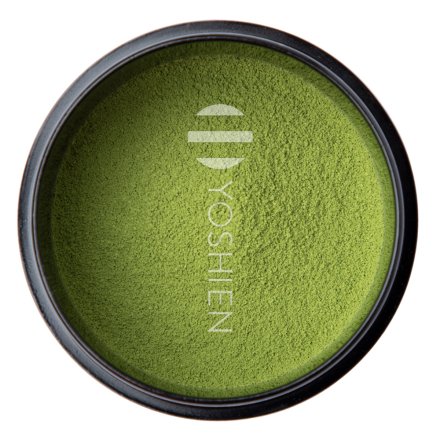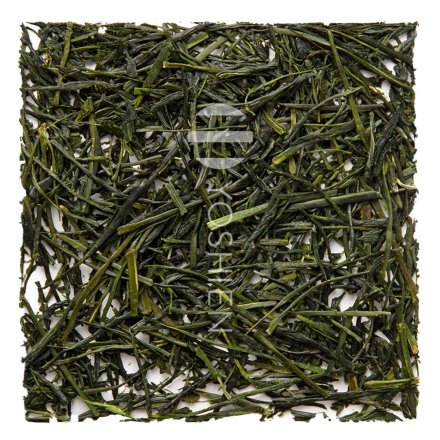Almost exclusively used for tea ceremonies, Raku is a special type of hand-moulded pottery that is quick-fired at low temperatures then rapidly cooled in air or water to give it its characteristic soft, warm texture. The Raku bowl was developed in the 16th century by the foremost Japanese tea master, Sen no Rikyu, in collaboration with Tanaka Chojiro, a Kyoto-based tile-maker and founding father of the Raku family of potters. Designed to reflect the sobriety of the
Aka Raku 赤楽
Traditionally, red or Aka Raku is made from iron-rich red clay, coated with a transparent glaze and fired at around 800°C (a little lower than for black Raku), resulting in a light red finish. Nowadays, for a more vivid colour, a high iron, ochre slip may be applied.



